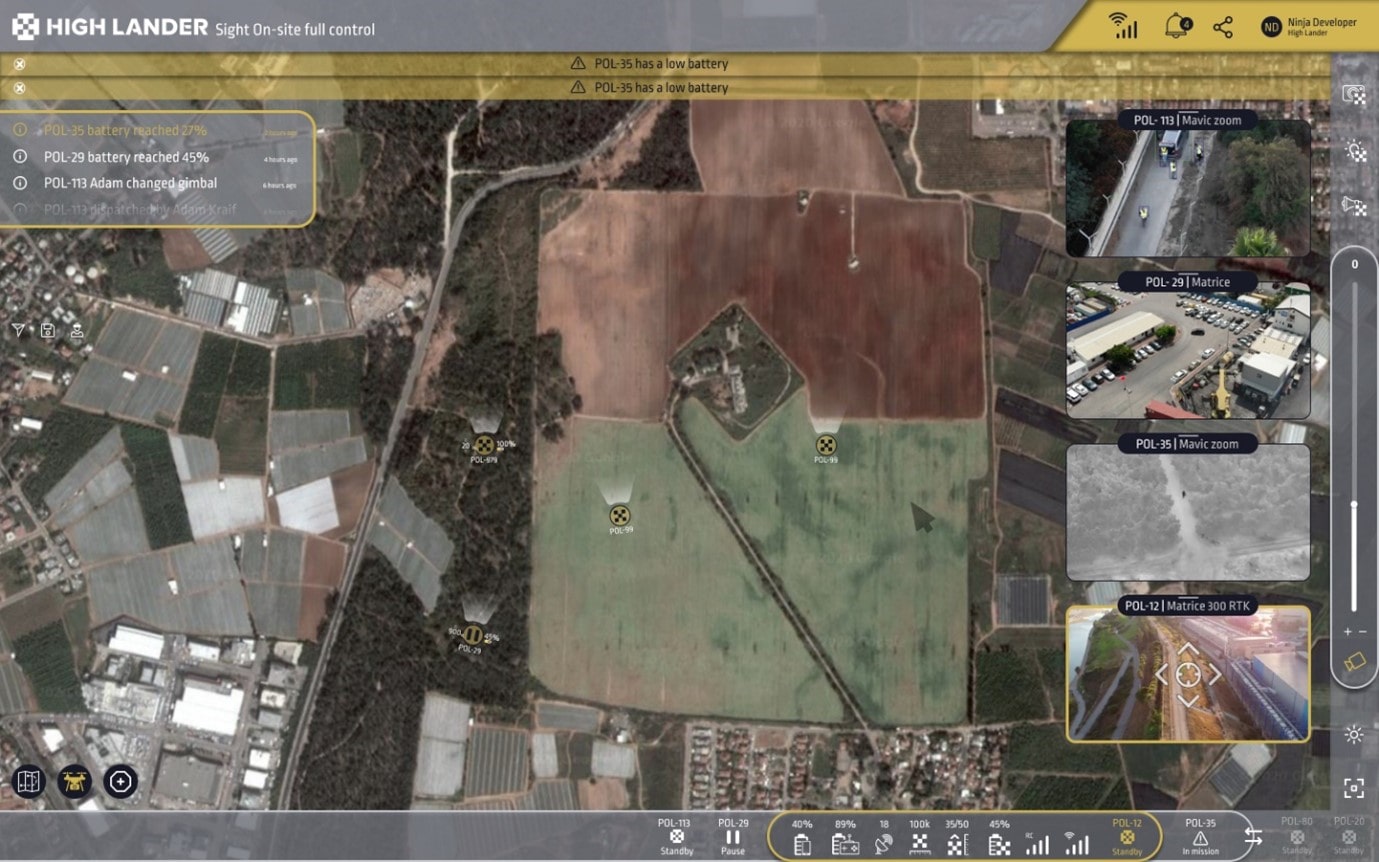MDOS is the unified control centre for Home Team's drones, allowing officers to control drones with different systems simultaneously.

In collaboration with High Lander Aviation Ltd, HTX's Robotics, Automation, and Unmanned Systems Centre of Expertise (RAUS CoE) is developing MDOS to meet the Home Team’s needs. (Photo: High Lander Aviation Ltd)
Against the backdrop of a moonlit sky, a kaleidoscope of lights burst forth, painting the sky in a sort of celestial dance. However, these lights are not of cosmic origin. Rather, they are drones performing an aerial ballet. Much like a real ballet, what makes this performance spectacular is not the individual capabilities of the drones, but how they perform seamlessly together.
Similarly, in the Home Team, each drone has a distinct role to play. Yet, the Home Team Multi Drone Operating System (MDOS) unites them in serving a common purpose—safeguarding Singapore’s security. MDOS serves as a unified control centre for all the Home Team’s drones, enabling Home Team officers to simultaneously control drones with different operating systems.
Into the unknown: Challenges in modern drone operations
In the not-too-distant future, the Home Team’s drone fleet is set to expand, with a diverse array of drones set to join the ranks. Though these drones may hail from different Home Team Departments, they will unite under a singular mission: keeping Singaporeans safe.
However, as you can imagine, adding more drones to the Home Team’s fleet creates more congestion in an already packed Singapore airspace. With so many drones flying about, a single flight management system is needed to not only monitor the various drones, but also prevent potential collisions.
What makes creating this single flight management system challenging is that drone variants differ in terms of their operating systems and modes of operation, with traditional drone operations relying on separate control interfaces for each drone. For example, Visual Line of Sight (VLOS) drone operations require Home Team officers to be present on the ground and always have the drone in their line of sight (i.e. their field of vision) while controlling it. Meanwhile, in Beyond Visual Line of Sight (BVLOS) drone operations, Home Team officers control the drones remotely from a backend command centre.
Charting a new future for drone management
Enter, MDOS. MDOS integrates multiple drone systems into a single dashboard, helping Home Team officers efficiently manage and monitor a wide array of drones.
MDOS also allows for different forms of drone flight control depending on the mode of drone operation, like autonomous waypoint flight (for BVLOS drones), “pilot in the loop mode” where recommended flight paths are sent from MDOS to VLOS ground drone pilots, and “manual mode” where pilots use physical sticks to remotely control the drone from the MDOS dashboard.
Apart from granting Home Team officers greater versatility in drone control, MDOS augments the monitoring capabilities of the various Home Team Departments. Live video feeds and telemetry data from the drones will be piped back to the MDOS dashboard, enabling a comprehensive real-time overview of all the Home Team’s drone operations.
Not only does MDOS enhance the monitoring of drone operations, but it also makes these operations safer. MDOS utilises a proprietary algorithm to calculate the flight path of the drone and will dynamically alter its flight path if needed to prevent collisions.
Unified drone control in action
In high-stakes situations like rescue operations, drones serve as a powerful ally. At the start of the rescue effort, they provide rescue officers with critical information that helps them tailor their rescue efforts to tackle challenges on the ground. For example, they can fly ahead of rescue officers and identify key hazards during dangerous missions (e.g. radiation threats).
Drones are not just useful at the start of the mission either, as they can be used throughout the rescue operation to monitor the situation on the ground in real-time, serving as another pair of eyes looking out for rescue officers. For example, imagine rescue officers entering a burning building, unaware that a nearby structure is about to collapse. The drone can avert any further disasters by immediately informing the rescue officers of this risk, helping them prioritise getting themselves and any civilians out of the area.
Throughout the rescue operation, MDOS enables drones with different capabilities to be deployed simultaneously. For example, during a rescue operation, drones that deliver medical supplies (e.g. Automated External Defibrillator (AED) drones) can be safely deployed alongside information-gathering drones to complement the efforts of rescue officers.
AEDs play a crucial role in treating life-threatening cardiac arrests by administering a “shock” to restore the heart’s normal rhythm. For many individuals suffering from cardiac arrests, these kits mean the difference between life and death, as any delay in resuscitation significantly diminishes their chances of survival.
AED drones can provide timely treatment to individuals by soaring ahead of first responders and dropping easy-to-use AED kits in the area. Once these kits are picked up by bystanders, they can immediately administer life-saving aid to the individual and turn the tides against death itself.
MDOS was recently showcased at the Milipol Asia-Pacific – TechX Summit exhibition held at the Marina Bay Sands convention centre from 3-5 April 2024.

![[FEATURED NEWS] Strengthening homeland security with drone countermeasures](/Cwp/assets/htx/images/listing-card-placeholder.png)